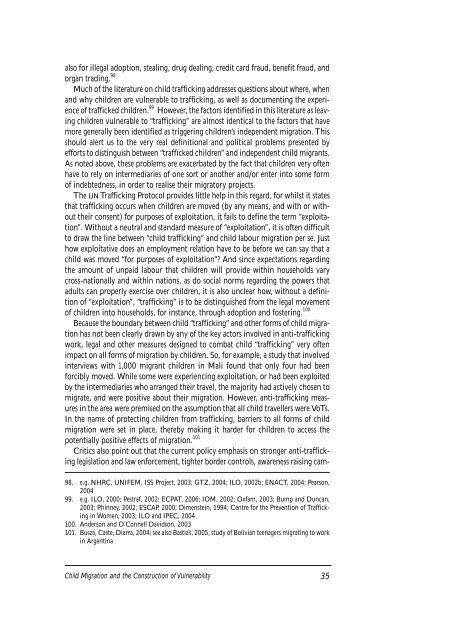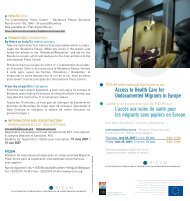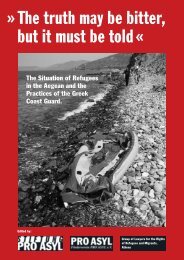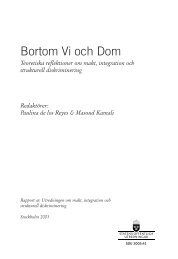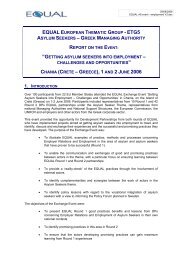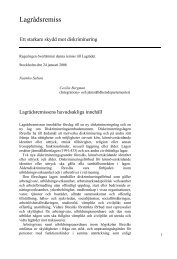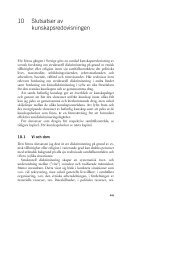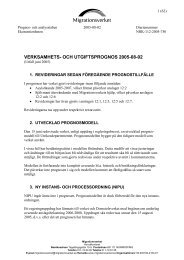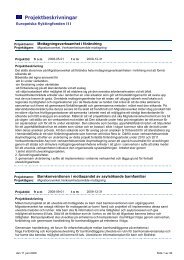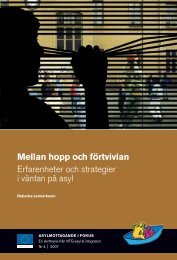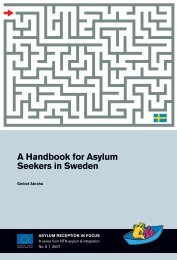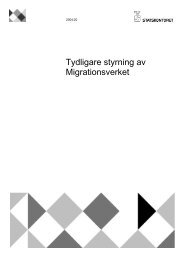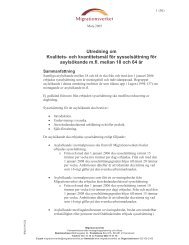and the Construction of Vulnerability - Child Trafficking
and the Construction of Vulnerability - Child Trafficking
and the Construction of Vulnerability - Child Trafficking
You also want an ePaper? Increase the reach of your titles
YUMPU automatically turns print PDFs into web optimized ePapers that Google loves.
also for illegal adoption, stealing, drug dealing, credit card fraud, benefit fraud, <strong>and</strong><br />
organ trading. 98<br />
Much <strong>of</strong> <strong>the</strong> literature on child trafficking addresses questions about where, when<br />
<strong>and</strong> why children are vulnerable to trafficking, as well as documenting <strong>the</strong> experience<br />
<strong>of</strong> trafficked children. 99 However, <strong>the</strong> factors identified in this literature as leaving<br />
children vulnerable to “trafficking” are almost identical to <strong>the</strong> factors that have<br />
more generally been identified as triggering children’s independent migration. This<br />
should alert us to <strong>the</strong> very real definitional <strong>and</strong> political problems presented by<br />
efforts to distinguish between “trafficked children” <strong>and</strong> independent child migrants.<br />
As noted above, <strong>the</strong>se problems are exacerbated by <strong>the</strong> fact that children very <strong>of</strong>ten<br />
have to rely on intermediaries <strong>of</strong> one sort or ano<strong>the</strong>r <strong>and</strong>/or enter into some form<br />
<strong>of</strong> indebtedness, in order to realise <strong>the</strong>ir migratory projects.<br />
The UN <strong>Trafficking</strong> Protocol provides little help in this regard, for whilst it states<br />
that trafficking occurs when children are moved (by any means, <strong>and</strong> with or without<br />
<strong>the</strong>ir consent) for purposes <strong>of</strong> exploitation, it fails to define <strong>the</strong> term “exploitation”.<br />
Without a neutral <strong>and</strong> st<strong>and</strong>ard measure <strong>of</strong> “exploitation”, it is <strong>of</strong>ten difficult<br />
to draw <strong>the</strong> line between “child trafficking” <strong>and</strong> child labour migration per se. Just<br />
how exploitative does an employment relation have to be before we can say that a<br />
child was moved “for purposes <strong>of</strong> exploitation”? And since expectations regarding<br />
<strong>the</strong> amount <strong>of</strong> unpaid labour that children will provide within households vary<br />
cross-nationally <strong>and</strong> within nations, as do social norms regarding <strong>the</strong> powers that<br />
adults can properly exercise over children, it is also unclear how, without a definition<br />
<strong>of</strong> “exploitation”, “trafficking” is to be distinguished from <strong>the</strong> legal movement<br />
<strong>of</strong> children into households, for instance, through adoption <strong>and</strong> fostering. 100<br />
Because <strong>the</strong> boundary between child “trafficking” <strong>and</strong> o<strong>the</strong>r forms <strong>of</strong> child migration<br />
has not been clearly drawn by any <strong>of</strong> <strong>the</strong> key actors involved in anti-trafficking<br />
work, legal <strong>and</strong> o<strong>the</strong>r measures designed to combat child “trafficking” very <strong>of</strong>ten<br />
impact on all forms <strong>of</strong> migration by children. So, for example, a study that involved<br />
interviews with 1,000 migrant children in Mali found that only four had been<br />
forcibly moved. While some were experiencing exploitation, or had been exploited<br />
by <strong>the</strong> intermediaries who arranged <strong>the</strong>ir travel, <strong>the</strong> majority had actively chosen to<br />
migrate, <strong>and</strong> were positive about <strong>the</strong>ir migration. However, anti-trafficking measures<br />
in <strong>the</strong> area were premised on <strong>the</strong> assumption that all child travellers were VoTs.<br />
In <strong>the</strong> name <strong>of</strong> protecting children from trafficking, barriers to all forms <strong>of</strong> child<br />
migration were set in place, <strong>the</strong>reby making it harder for children to access <strong>the</strong><br />
potentially positive effects <strong>of</strong> migration. 101<br />
Critics also point out that <strong>the</strong> current policy emphasis on stronger anti-trafficking<br />
legislation <strong>and</strong> law enforcement, tighter border controls, awareness raising cam-<br />
98. e.g. NHRC, UNIFEM, ISS Project, 2003; GTZ, 2004; ILO, 2002b; ENACT, 2004; Pearson,<br />
2004<br />
99. e.g. ILO, 2000; Pestraf, 2002; ECPAT, 2006; IOM, 2002; Oxfam, 2003; Bump <strong>and</strong> Duncan,<br />
2003; Phinney, 2002; ESCAP, 2000; Dimenstein, 1994; Centre for <strong>the</strong> Prevention <strong>of</strong> <strong>Trafficking</strong><br />
in Women, 2003; ILO <strong>and</strong> IPEC, 2004<br />
100. Anderson <strong>and</strong> O’Connell Davidson, 2003<br />
101. Busza, Caste, Diarra, 2004; see also Bastia’s, 2005, study <strong>of</strong> Bolivian teenagers migrating to work<br />
in Argentina<br />
<strong>Child</strong> Migration <strong>and</strong> <strong>the</strong> <strong>Construction</strong> <strong>of</strong> <strong>Vulnerability</strong><br />
35


